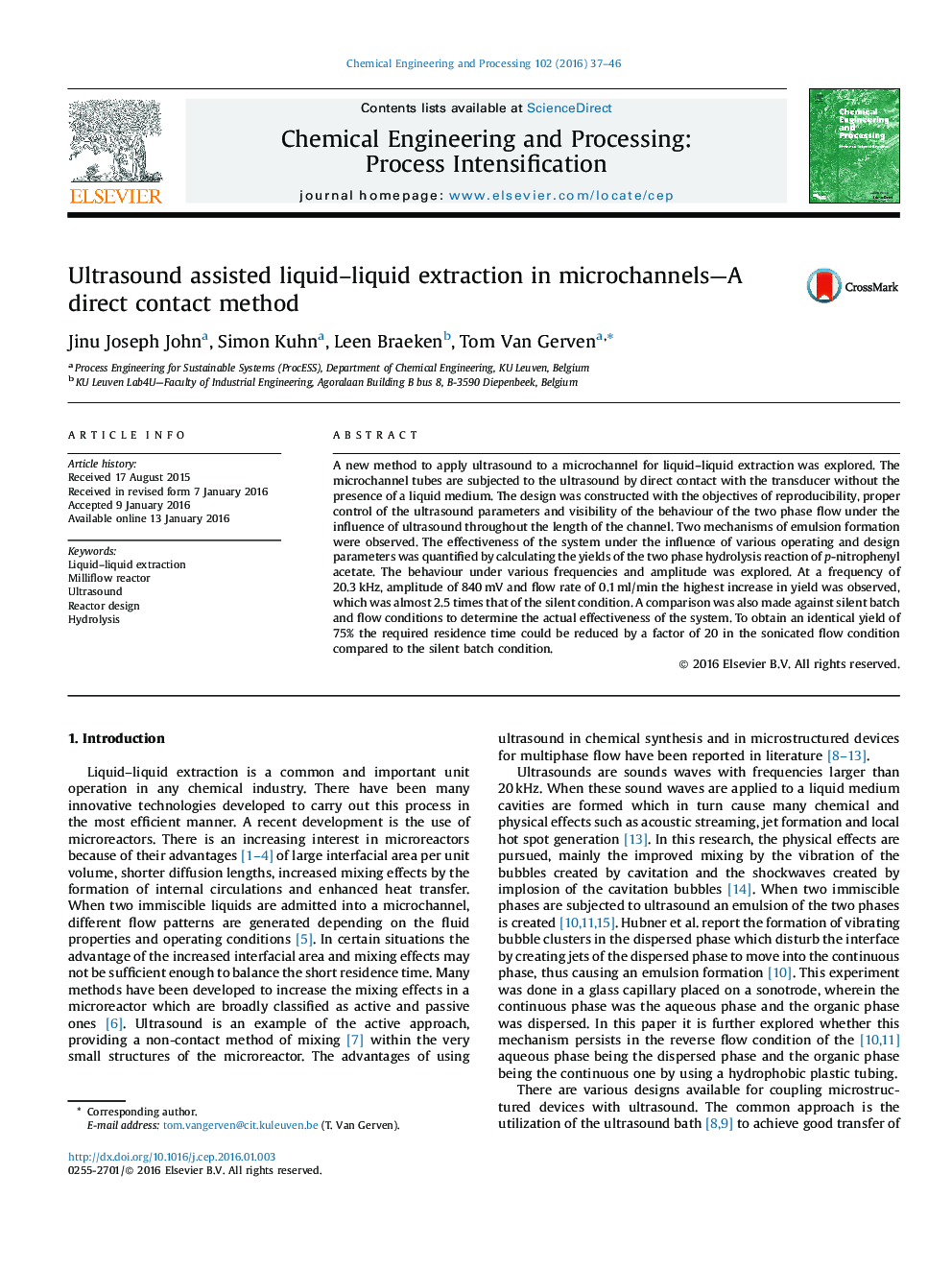| Article ID | Journal | Published Year | Pages | File Type |
|---|---|---|---|---|
| 687899 | Chemical Engineering and Processing: Process Intensification | 2016 | 10 Pages |
•A novel design for direct coupling of ultrasound to microreactor was developed.•The principle was proven in a reactive extraction process.•Two mechanisms of emulsification by ultrasound to segmented flow were identified.•Sonication proved to effectively increase the yield of the reactive extraction.•Best improvement was observed at low frequency, low flow rate and high amplitude.
A new method to apply ultrasound to a microchannel for liquid–liquid extraction was explored. The microchannel tubes are subjected to the ultrasound by direct contact with the transducer without the presence of a liquid medium. The design was constructed with the objectives of reproducibility, proper control of the ultrasound parameters and visibility of the behaviour of the two phase flow under the influence of ultrasound throughout the length of the channel. Two mechanisms of emulsion formation were observed. The effectiveness of the system under the influence of various operating and design parameters was quantified by calculating the yields of the two phase hydrolysis reaction of p-nitrophenyl acetate. The behaviour under various frequencies and amplitude was explored. At a frequency of 20.3 kHz, amplitude of 840 mV and flow rate of 0.1 ml/min the highest increase in yield was observed, which was almost 2.5 times that of the silent condition. A comparison was also made against silent batch and flow conditions to determine the actual effectiveness of the system. To obtain an identical yield of 75% the required residence time could be reduced by a factor of 20 in the sonicated flow condition compared to the silent batch condition.
Graphical abstractFigure optionsDownload full-size imageDownload as PowerPoint slide
